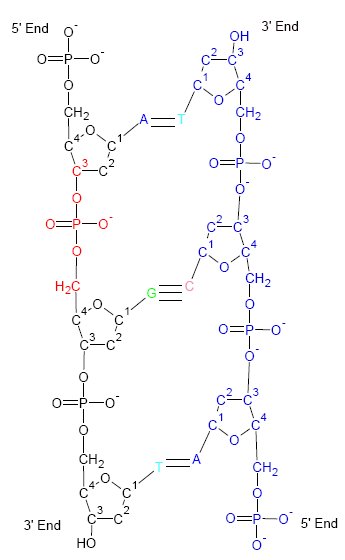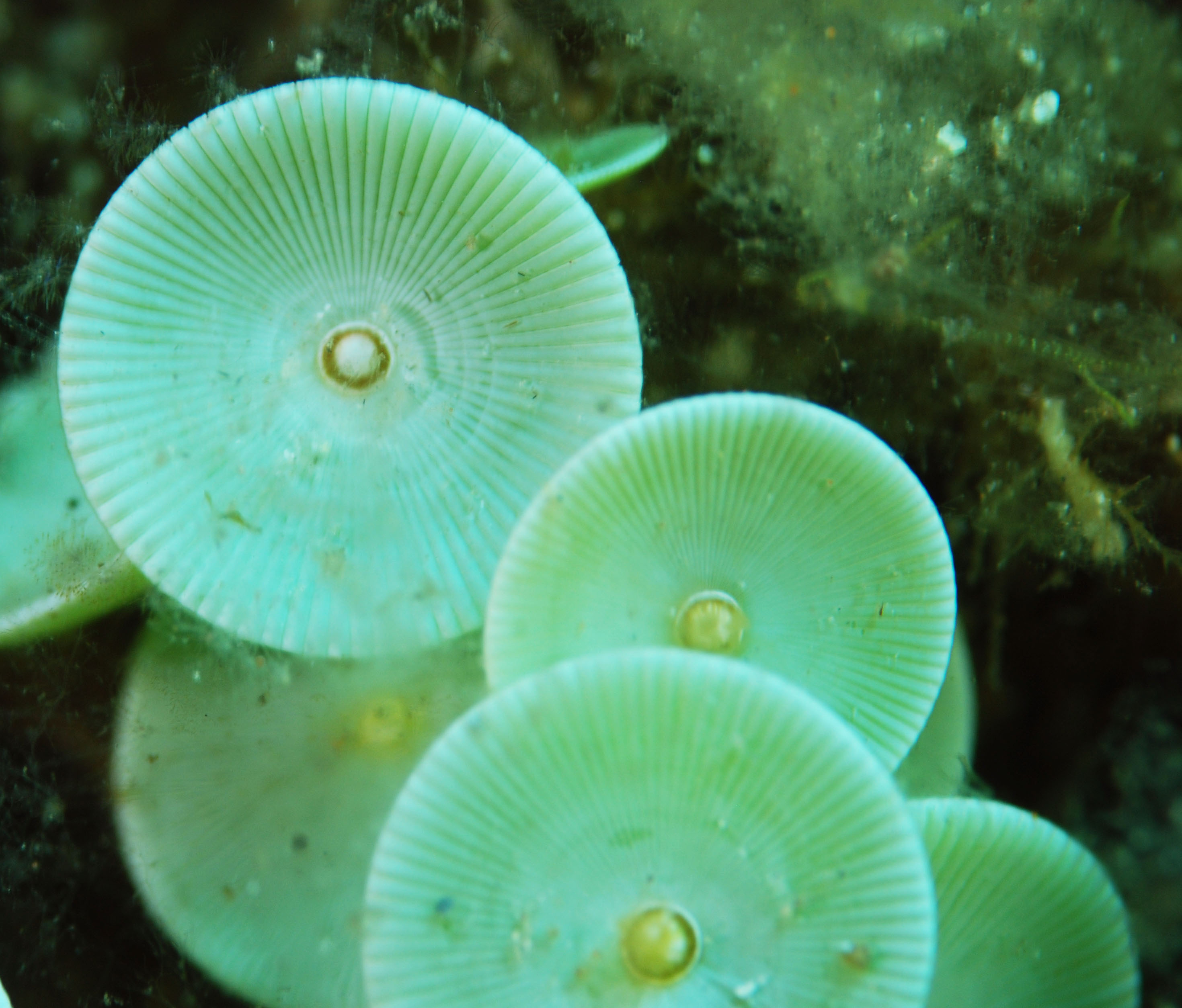|
History Of RNA Biology
Numerous key discoveries in biology have emerged from studies of RNA (ribonucleic acid), including seminal work in the fields of biochemistry, genetics, microbiology, molecular biology, molecular evolution and structural biology. As of 2010, 30 scientists have been awarded Nobel Prizes for experimental work that includes studies of RNA. Specific discoveries of high biological significance are discussed in this article. For related information, see the articles on History of Molecular Biology and History of Genetics. For background information, see the articles on RNA and nucleic acid. 1930–1950 RNA and DNA have distinct chemical properties When first studied in the early 1900s, the chemical and biological differences between RNA and DNA were not apparent, and they were named after the materials from which they were isolated; RNA was initially known as "yeast nucleic acid" and DNA was "thymus nucleic acid". Using diagnostic chemical tests, carbohydrate chemists showed that t ... [...More Info...] [...Related Items...] OR: [Wikipedia] [Google] [Baidu] |
Biology
Biology is the scientific study of life. It is a natural science with a broad scope but has several unifying themes that tie it together as a single, coherent field. For instance, all organisms are made up of cells that process hereditary information encoded in genes, which can be transmitted to future generations. Another major theme is evolution, which explains the unity and diversity of life. Energy processing is also important to life as it allows organisms to move, grow, and reproduce. Finally, all organisms are able to regulate their own internal environments. Biologists are able to study life at multiple levels of organization, from the molecular biology of a cell to the anatomy and physiology of plants and animals, and evolution of populations.Based on definition from: Hence, there are multiple subdisciplines within biology, each defined by the nature of their research questions and the tools that they use. Like other scientists, biologists use the sc ... [...More Info...] [...Related Items...] OR: [Wikipedia] [Google] [Baidu] |
Nucleobase
Nucleobases, also known as ''nitrogenous bases'' or often simply ''bases'', are nitrogen-containing biological compounds that form nucleosides, which, in turn, are components of nucleotides, with all of these monomers constituting the basic building blocks of nucleic acids. The ability of nucleobases to form base pairs and to stack one upon another leads directly to long-chain helical structures such as ribonucleic acid (RNA) and deoxyribonucleic acid (DNA). Five nucleobases—adenine (A), cytosine (C), guanine (G), thymine (T), and uracil (U)—are called ''primary'' or ''canonical''. They function as the fundamental units of the genetic code, with the bases A, G, C, and T being found in DNA while A, G, C, and U are found in RNA. Thymine and uracil are distinguished by merely the presence or absence of a methyl group on the fifth carbon (C5) of these heterocyclic six-membered rings. In addition, some viruses have aminoadenine (Z) instead of adenine. It differs in having an ... [...More Info...] [...Related Items...] OR: [Wikipedia] [Google] [Baidu] |
Protein
Proteins are large biomolecules and macromolecules that comprise one or more long chains of amino acid residues. Proteins perform a vast array of functions within organisms, including catalysing metabolic reactions, DNA replication, responding to stimuli, providing structure to cells and organisms, and transporting molecules from one location to another. Proteins differ from one another primarily in their sequence of amino acids, which is dictated by the nucleotide sequence of their genes, and which usually results in protein folding into a specific 3D structure that determines its activity. A linear chain of amino acid residues is called a polypeptide. A protein contains at least one long polypeptide. Short polypeptides, containing less than 20–30 residues, are rarely considered to be proteins and are commonly called peptides. The individual amino acid residues are bonded together by peptide bonds and adjacent amino acid residues. The sequence of amino acid residue ... [...More Info...] [...Related Items...] OR: [Wikipedia] [Google] [Baidu] |
Francis Crick
Francis Harry Compton Crick (8 June 1916 – 28 July 2004) was an English molecular biologist, biophysicist, and neuroscientist. He, James Watson, Rosalind Franklin, and Maurice Wilkins played crucial roles in deciphering the helical structure of the DNA molecule. Crick and Watson's paper in ''Nature'' in 1953 laid the groundwork for understanding DNA structure and functions. Together with Maurice Wilkins, they were jointly awarded the 1962 Nobel Prize in Physiology or Medicine "for their discoveries concerning the molecular structure of nucleic acids and its significance for information transfer in living material". Crick was an important theoretical molecular biologist and played a crucial role in research related to revealing the helical structure of DNA. He is widely known for the use of the term " central dogma" to summarise the idea that once information is transferred from nucleic acids (DNA or RNA) to proteins, it cannot flow back to nucleic acids. In other words ... [...More Info...] [...Related Items...] OR: [Wikipedia] [Google] [Baidu] |
Acetabularia
''Acetabularia'' is a genus of green algae in the family Polyphysaceae, Typically found in subtropical waters, ''Acetabularia'' is a single-celled organism, but gigantic in size and complex in form, making it an excellent model organism for studying cell biology. In form, the mature ''Acetabularia'' resembles the round leaves of a nasturtium, is 4 to 10 cm tall and has three anatomical parts: a bottom rhizoid that resembles a set of short roots; a long stalk in the middle; and a top umbrella of branches that may fuse into a cap. Unlike other giant unicellular organisms, which are multinucleate, ''Acetabularia'' has a single nucleus, located in the rhizoid and allows the cell to regenerate completely if its cap is removed. The caps of two ''Acetabularia'' may also be exchanged, even from two different species. In addition, if a piece of the stem is removed, with no access to the nucleus in the rhizoid, this isolated stem piece will also grow a new cap. In the 1930s–195 ... [...More Info...] [...Related Items...] OR: [Wikipedia] [Google] [Baidu] |
Joachim Hämmerling
Dr. Joachim Hämmerling (9 March 1901 - 5 August 1980) was a pioneering Danish-German biologist funded by Nazi Germany who determined that the nucleus of a cell controls the development of organisms. His experimentation with the green algae ''Acetabularia'' provided a model subject for modern cell biological research, and proved the existence of morphogenetic substances, or mRNP. Early life and professions Joachim August Wilhelm Hämmerling was born on 9 March 1901 in Berlin. He was educated at the University of Berlin and University of Marburg. He received his doctorate in 1924. From 1924 to 1931 he was a research assistant at the Kaiser Wilhelm Institute for Biology, and from 1931 to 1940 a lecturer. In 1940 he became Director of the German-Italian Institute of Marine Biology. In 1942 he became an associate professor of marine biology at the University of Berlin, before becoming the head of the Kaiser Wilhelm Institute for Biology in Langenargen am Bodensee in 1946. From 1949 ... [...More Info...] [...Related Items...] OR: [Wikipedia] [Google] [Baidu] |
Cytoplasm
In cell biology, the cytoplasm is all of the material within a eukaryotic cell, enclosed by the cell membrane, except for the cell nucleus. The material inside the nucleus and contained within the nuclear membrane is termed the nucleoplasm. The main components of the cytoplasm are cytosol (a gel-like substance), the organelles (the cell's internal sub-structures), and various cytoplasmic inclusions. The cytoplasm is about 80% water and is usually colorless. The submicroscopic ground cell substance or cytoplasmic matrix which remains after exclusion of the cell organelles and particles is groundplasm. It is the hyaloplasm of light microscopy, a highly complex, polyphasic system in which all resolvable cytoplasmic elements are suspended, including the larger organelles such as the ribosomes, mitochondria, the plant plastids, lipid droplets, and vacuoles. Most cellular activities take place within the cytoplasm, such as many metabolic pathways including glycolysis, and proces ... [...More Info...] [...Related Items...] OR: [Wikipedia] [Google] [Baidu] |
Cell Nucleus
The cell nucleus (pl. nuclei; from Latin or , meaning ''kernel'' or ''seed'') is a membrane-bound organelle found in eukaryotic cells. Eukaryotic cells usually have a single nucleus, but a few cell types, such as mammalian red blood cells, have no nuclei, and a few others including osteoclasts have many. The main structures making up the nucleus are the nuclear envelope, a double membrane that encloses the entire organelle and isolates its contents from the cellular cytoplasm; and the nuclear matrix, a network within the nucleus that adds mechanical support. The cell nucleus contains nearly all of the cell's genome. Nuclear DNA is often organized into multiple chromosomes – long stands of DNA dotted with various proteins, such as histones, that protect and organize the DNA. The genes within these chromosomes are structured in such a way to promote cell function. The nucleus maintains the integrity of genes and controls the activities of the cell by regulating gene expres ... [...More Info...] [...Related Items...] OR: [Wikipedia] [Google] [Baidu] |
Jean Brachet
Jean Louis Auguste Brachet (19 March 1909 – 10 August 1988) was a Belgian biochemist who made a key contribution in understanding the role of RNA. Life Brachet was born in Etterbeek near Brussels in Belgium, the son of Albert Brachet, embryologist. He was educated at L'Ecole Alsacienne in Paris then studied medicine at the Université Libre de Bruxelles graduating in 1934. He then worked at the University of Cambridge and at Princeton University and at several institutes of marine biological research. Brachet was appointed Professor of Animal Morphology and General Biology at the Université Libre de Bruxelles and Research Director of the International Laboratory for Genetics and Biophysics in Naples. In 1933 Brachet was able to show that DNA was found in chromosomes and that RNA was present in the cytoplasm of all cells.Sapp J., ''Jean Brachet, L'Hérédité Générale and the Origins of Molecular Embryology'', History and philosophy of the life sciences (Hist. phi ... [...More Info...] [...Related Items...] OR: [Wikipedia] [Google] [Baidu] |
Sea Urchin
Sea urchins () are spiny, globular echinoderms in the class Echinoidea. About 950 species of sea urchin live on the seabed of every ocean and inhabit every depth zone from the intertidal seashore down to . The spherical, hard shells (tests) of sea urchins are round and spiny, ranging in diameter from . Sea urchins move slowly, crawling with tube feet, and also propel themselves with their spines. Although algae are the primary diet, sea urchins also eat slow-moving (sessile) animals. Predators that eat sea urchins include a wide variety of fish, starfish, crabs, marine mammals. Sea urchins are also used as food especially in Japan. Adult sea urchins have fivefold symmetry, but their pluteus larvae feature bilateral (mirror) symmetry, indicating that the sea urchin belongs to the Bilateria group of animal phyla, which also comprises the chordates and the arthropods, the annelids and the molluscs, and are found in every ocean and in every climate, from the tropics to the pol ... [...More Info...] [...Related Items...] OR: [Wikipedia] [Google] [Baidu] |
Annual Review Of Biochemistry
''Annual Review of Biochemistry'' is an annual peer reviewed scientific journal published by Annual Reviews, a nonprofit scientific publisher. Its first volume was published in 1932, and its founding editor was J. Murray Luck. The current editor is Roger D. Kornberg. The journal focuses on molecular biology and biological chemistry review articles. As of 2022, ''Journal Citation Reports'' gives the journal an impact factor of 27.258, ranking it fifth out of 296 journals in the category "Biochemistry and Molecular Biology". History The ''Annual Review of Biochemistry'' was the creation of Stanford University chemist and professor J. Murray Luck. In 1930, Luck offered a course on current research in biochemistry to graduate students. In designing the course, he said he felt "knee-deep in trouble", as he believed he was sufficiently knowledgeable in only a few areas of biochemistry. He considered the volume of research to be overwhelming; there were 6,500 abstracts regarding bioch ... [...More Info...] [...Related Items...] OR: [Wikipedia] [Google] [Baidu] |







